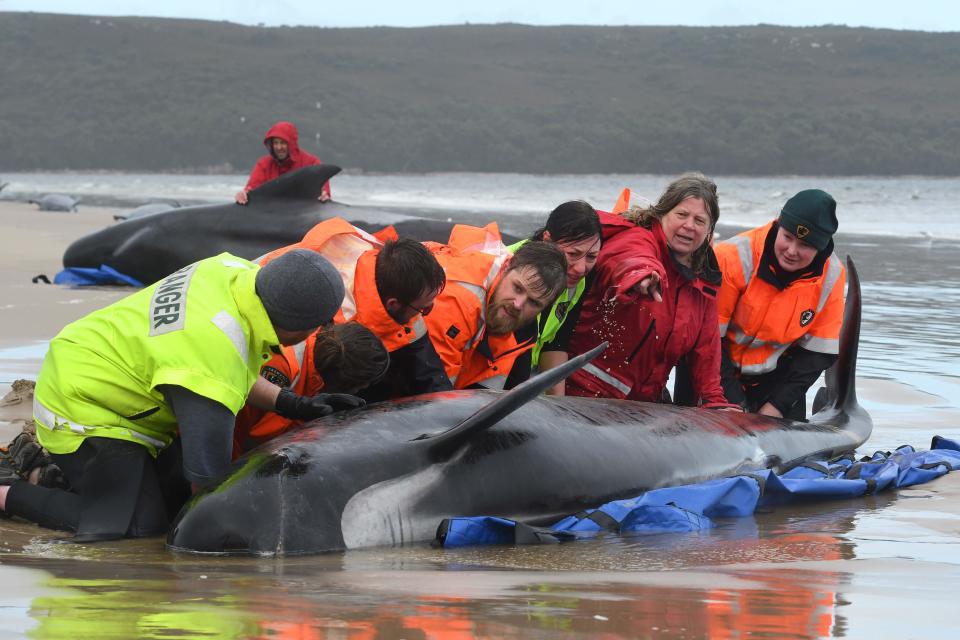Australia to euthanise beached whales after worst mass stranding in country’s history

Australian authorities are set to euthanise several surviving long-finned pilot whales after almost 400 died in one of the world’s largest ever mass strandings of the mammals.
Almost 500 of the whales, which is a large species of oceanic dolphin, were discovered on Monday and Wednesday beached on the shore and sand bars along the remote west coast of the island state near the town of Strahan.
By late Thursday rescuers had managed to free almost 90 of the whales.
The majority of those had reached the safety of deeper water, but at least four too exhausted to swim to safety were likely to be euthanised and others could return to the area when the tide turns, officials warned.
The task of removing around 380 of the dead whales which together weigh hundreds of tons, will begin on Friday and is likely to take days, Marine Conservation Program wildlife biologist Kris Carlyon told AP.
Methods under consideration include towing the carcasses or loading them onto barges to take them out to sea to be dumped somewhere where they will not drift ashore or create navigational hazards.
Dr Carlyon said the rescue crews were working 12-hour days.
"Everyone's tired, feeling the fatigue, long days," he said. "The emotional toll can be significant."
Speaking to Reuters, Nic Deka, the incident controller for the state government's Parks and Wildlife Service said the outlook for any of the whales remaining in the area was not good.
He said: “Beyond the next 24 hours, any remaining animals that are alive will be less viable.”
Speaking about the disposal of the carcasses, he added: “Our preference is for disposal at sea, we're still taking expert advice as to exactly where the drop off point may be," noting the decomposing whales could pose an environmental health risk.
Mike Double, a zoologist who leads the Australian Marine Mammal Centre, told Reuters why the decision had been made to euthanise those whales which are still alive, but remain stranded.
He said: “For large whales very sadly, it could take weeks for them to die, and they get blistered in the sun, so you would be thinking about an ethical and humane thing to do.”

While very large species of whales can be euthanised via a lethal dose of potassium chloride to the heart or even explosives, whales like the long-finned pilots are usually shot with a firearm.
The stranding, the biggest on record in modern Australia and one of the largest in the world, has drawn attention to a natural phenomenon that remains largely a mystery to scientists.
A rescue team of more than 60 government scientists and volunteers had dashed to the remote location, braving freezing cold waters in order to carry out the arduous refloating process.
As many as four or five people per whale were needed to attach slings to the animals and guide them as they were pulled to deeper water by boats.
Why the whales ran aground is a mystery. Theories include that the pod followed sick whales or made a navigational error.
Mainland Australia's largest mass stranding had previously been 320 pilot whales near the Western Australia state town of Dunsborough in 1996.
Tasmania's previous largest stranding involved 294 whales on the northwest coast in 1935.
Additional reporting by agencies
Read more
Humpback whale escapes crocodile-infested river in Australia
Woman seriously injured by whale while swimming in Australia
Killer whale who went viral after carrying her dead calf for 17 days falls pregnant


